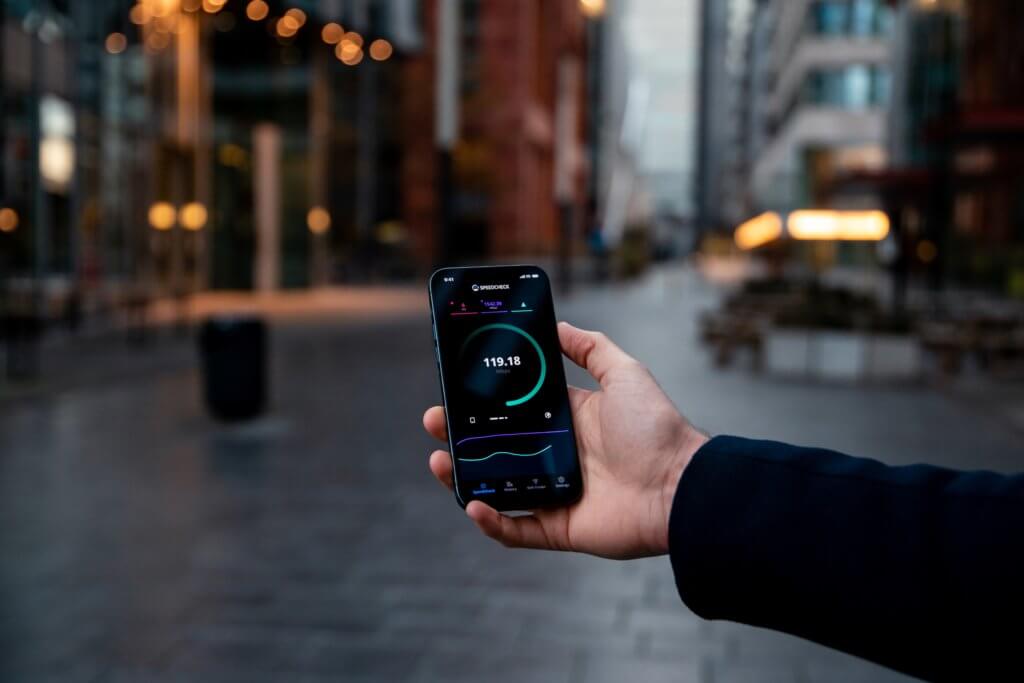
5G is becoming increasingly common in today’s world, with more and more 5G compatible devices entering the market. Within the UK, the EE mobile network was the first to roll out 5G, closely followed by Vodafone, O2 and Three. Other networks are Virtual Network Operators, and do not own their own physical networks. Instead, they use one of the other networks to deliver their service. Due to its increased usage, there have been more and more articles discussing the potential dangers of 5G technology. As it is a relatively new technology on the market, the dangers are not fully known – while most studies deem the radiation that 5G produces to be safe, others have highlighted potential negative impacts on health. Due to this, it is important to know where 5G towers are located in your area and what you can do to protect yourself from them.
If you are looking to understand more about 5G radiation take a look at our guide to 5G radiation and how to protect yourself from it, take a look at our article what is emf radiation? If you are unsure whether your area has 5G, or where the towers are located, you might want to continue reading. Finding 5G towers is quite difficult as the information is not easy to access. Take a look below at our guide on how to find them around your area.
Does your area receive 5G signal?
Before you look for specific 5G towers, it is important to work out if 5G is available in your area. Through a basic google search, you will find a few websites that you can use to check the coverage in your region. Some of these websites can be slightly out of date however, so it is useful to check more than one of them just to be sure.
The website 5g.co.uk is a great resource to check for 5g coverage as it includes data from all the UK mobile networks. Their 5G Coverage Checker allows you to enter your postcode in order to check the coverage in this area.
The website also has a 5G coverage overview which summarizes the main towns and cities in the UK’s 5G coverage, splitting the information up by mobile network.
If your location does not have 5G coverage, then the likelihood that there are functioning 5G towers in your area is extremely low. If it does have 5G coverage, then you can begin to look for the approximate location of the towers.
Where are the 5G cell towers in my area?
One of the best ways to look for 5G towers is the Ookla 5G rollout map. One great thing about this website is that it is updated every week meaning that it is up to date. Additionally, the map doesn’t just cover it UK – it has information on the whole world. If you are interested in staying up to date, you can also follow the map on social media, which will give you updates of any new 5G towers. The Ookla platform is user friendly and can be zoomed in or zoomed out depending on the areas that you want to view.
On the right hand side, you can filter by deployment type for more specific information. Commercial availability is masts that are used by the public, whereas limited availability refers to a smaller roll out and pre-release means that the tower is still in progress but is due for completion soon – therefore it is good to know about these as they will soon be up and running. If you are looking for towers in general, search for all three at once and this will give you all the information that you require.
On the map, you can zoom in further to see the UK, and even further to look at your local area. The colour of each of the circles signifies the stage of the tower as we have previously discussed. The number in the circle is the total number of mobile networks that provide 5G in this area. You can click on the circles to receive more details about the networks.

Locating 5G Towers in your Neighbourhood
If you have now confirmed that 5G is available in your area, you can now begin to look for the towers. Usually, in residential areas you are not looking for the bigger towers, but rather the millimeter towards that can be found in many local neighbourhoods. It is these towers that experts are most worried about as they use millimeter frequencies that are much higher than 3G and 4G, and may be harmful.
Searching for these 5G towers is more difficult due to the higher frequency. 5G signals cannot be detected using a traditional EMF meter. You need a meter that will identify frequencies between 24 and 39 Gz. One gadget that we think is up to the job is a spectrum analyser. This will allow you to detect a broader range of frequencies which will encompass that of 5G. The Anritsu’s Field Master Pro will allow you to track down 5G towers, although they can be pricey. If you are measuring the frequency in the area, and the readings are within the 24-39 Gz range, you will be near a 5G tower.
If you cannot buy a spectrum analyser, you should zoom in on the Ookla map as far as you can, and this will give you an approximate area for the tower.

Conclusion
5G has seen a rapid roll out across the UK, and the world in recent years and it looks like this is only set to expand further in the future, with the further development of technology. With the roll out of this technology, there are concerns for public health, so it is important to know roughly where these towers are located.
Take a look at our other article what is emf radiation? that discusses ways to protect yourself and your home from harmful EMF rays including 5G rays. This will help you feel safer in your local area.